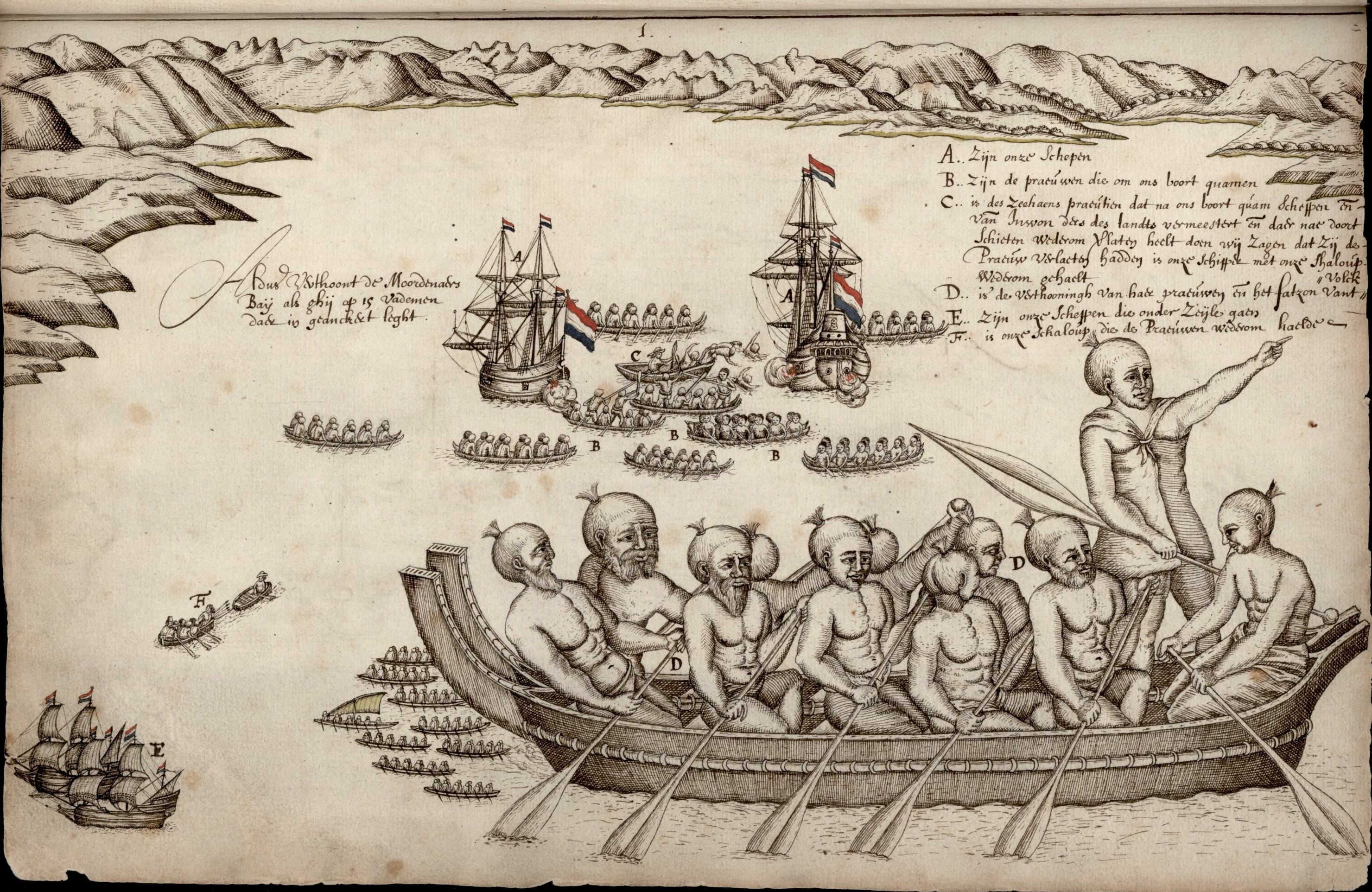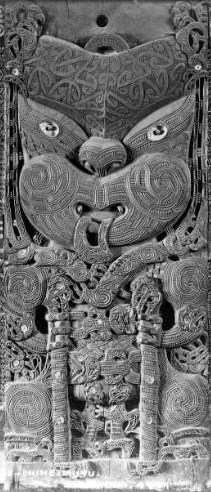|
Tiki Culture
Tiki culture is an American-originated art, music, and entertainment movement inspired by Polynesian, Melanesian, and Micronesian cultures, and by Oceanian art. Influential cultures to Tiki culture include Australasia, Melanesia, Micronesia, Polynesia, the Caribbean Islands, and Hawaii. The name comes from Tiki, the Māori name for the first human, often represented in the form of hei-tiki, a pendant and important taonga. The hei-tiki was often appropriated by Europeans as a commercialised good luck charm, hence the name of Tiki culture. Despite the Pacific Islands spanning over and including many different unrelated cultures, religions, and languages, Tiki aesthetic is considered by some to be amalgamated into one "fantasia of trans-Pacific cultures" and "colonial nostalgia". Because of this, and the simplistic view of the Pacific taken by the aesthetic, Tiki culture has often proved controversial. Tiki culture initially extended to decorate themed bars and restaurants ... [...More Info...] [...Related Items...] OR: [Wikipedia] [Google] [Baidu] |
Visual Art Of The United States
Visual art of the United States or American art is visual art made in the United States or by U.S. artists. Before colonization, there were many flourishing traditions of Native American art, and where the Spanish colonized Spanish Colonial architecture and the accompanying styles in other media were quickly in place. Early colonial art on the East Coast initially relied on artists from Europe, with John White (1540-c. 1593) the earliest example. In the late 18th and early 19th centuries, artists primarily painted portraits, and some landscapes in a style based mainly on English painting. Furniture-makers imitating English styles and similar craftsmen were also established in the major cities, but in the English colonies, locally made pottery remained resolutely utilitarian until the 19th century, with fancy products imported. But in the later 18th century two U.S. artists, Benjamin West and John Singleton Copley, became the most successful painters in London of history p ... [...More Info...] [...Related Items...] OR: [Wikipedia] [Google] [Baidu] |
Cultural Appropriation
Cultural appropriation is the adoption of an element or elements of one culture or cultural identity, identity by members of another culture or identity in a manner perceived as inappropriate or unacknowledged. Such a controversy typically arises when members of a dominant culture borrow from minority groups, minority cultures. When cultural elements are copied from a minority culture by members of a dominant culture, and these elements are used outside of their original cultural context – sometimes even against the expressly stated wishes of members of the originating culture – the practice is often received negatively. On imitation Native headdresses as "the embodiment of cultural appropriation ... donning a highly sacred piece of Native culture like a fashion accessory". Cultural appropriation can include the exploitation of another culture's religious and cultural traditions, customs, dance steps, fashion, symbols, language, history and music. Cultural appropriat ... [...More Info...] [...Related Items...] OR: [Wikipedia] [Google] [Baidu] |
Oxford English Dictionary
The ''Oxford English Dictionary'' (''OED'') is the principal historical dictionary of the English language, published by Oxford University Press (OUP), a University of Oxford publishing house. The dictionary, which published its first edition in 1884, traces the historical development of the English language, providing a comprehensive resource to scholars and academic researchers, and provides ongoing descriptions of English language usage in its variations around the world. In 1857, work first began on the dictionary, though the first edition was not published until 1884. It began to be published in unbound Serial (literature), fascicles as work continued on the project, under the name of ''A New English Dictionary on Historical Principles; Founded Mainly on the Materials Collected by The Philological Society''. In 1895, the title ''The Oxford English Dictionary'' was first used unofficially on the covers of the series, and in 1928 the full dictionary was republished in 10 b ... [...More Info...] [...Related Items...] OR: [Wikipedia] [Google] [Baidu] |
Māori Mythology
Māori mythology and Māori traditions are two major categories into which the remote oral history of New Zealand's Māori people, Māori may be divided. Māori myths concern tales of supernatural events relating to the origins of what was the observable world for the pre-European Māori, often involving gods and demigods. Māori tradition concerns more folkloric legends often involving historical or semi-historical forebears. Both categories merge in to explain the overall origin of the Māori and their connections to the world which they lived in. The Māori did not have a writing system before European contact, beginning in 1769, therefore they relied on oral retellings and recitations memorised from generation to generation. The three forms of expression prominent in Māori and Polynesian oral literature are genealogical recital, poetry, and narrative prose. Experts in these subjects were broadly known as . The rituals, beliefs, and general worldview of Māori society were ... [...More Info...] [...Related Items...] OR: [Wikipedia] [Google] [Baidu] |
Protoplast (religion)
A protoplast, from ancient Greek (''prōtóplastos'', "first-formed"), in a religious context initially referred to the first human or, more generally, to the first organized body of progenitors of Human, humankind (as in Adam and Eve or Manu (Hinduism), Manu and Shatarupa , Shatrupa), or of surviving humanity after a cataclysm (as in Deucalion or Noah). List of protoplasts ;Abrahamic religions, Abrahamic mythology * Adam and Eve * Noah * Adam Kadmon (esoteric) * Adam kasia ("hidden Adam") and :de:Adam pagria, Adam pagria ("bodily Adam") (esoteric), in Mandaeism * Lilith (esoteric) ;Australian Aboriginal mythology * Wurugag and Waramurungundi * Yhi * Kidili ;Ayyavazhi mythology * Kaliyan and Kalicchi ;Aztec mythology * Tata/Coxcox and Nana/Xochitl - new progenitors of humankind after the flood * Oxomoco and Cipactonal - first human couple created ;Baganda *Kintu ;Cherokee mythology, Cherokee * Cherokee mythology#The Story of Corn and Medicine, Selu and Kanati ;Chinese ... [...More Info...] [...Related Items...] OR: [Wikipedia] [Google] [Baidu] |
Cultural Appropriation
Cultural appropriation is the adoption of an element or elements of one culture or cultural identity, identity by members of another culture or identity in a manner perceived as inappropriate or unacknowledged. Such a controversy typically arises when members of a dominant culture borrow from minority groups, minority cultures. When cultural elements are copied from a minority culture by members of a dominant culture, and these elements are used outside of their original cultural context – sometimes even against the expressly stated wishes of members of the originating culture – the practice is often received negatively. On imitation Native headdresses as "the embodiment of cultural appropriation ... donning a highly sacred piece of Native culture like a fashion accessory". Cultural appropriation can include the exploitation of another culture's religious and cultural traditions, customs, dance steps, fashion, symbols, language, history and music. Cultural appropriat ... [...More Info...] [...Related Items...] OR: [Wikipedia] [Google] [Baidu] |
Retro Style
Retro style is imitative or consciously derivative of lifestyles, trends, or art forms from the past, including in music, modes, fashions, or attitudes. It has been argued that there is a nostalgia cycle in popular culture. Definition The term ''retro'' has been in use since 1972 to describe on the one hand, new artifacts that self-consciously refer to particular modes, motifs, techniques, and materials of the past.Dermody, Breathnach 2009, p. 7 But on the other hand, many people use the term to categorize styles that have been created in the past.Baker 2012, p. 622 Retro style refers to new things that display characteristics of the past. Unlike the historicism of the Romantic generations, it is mostly the recent past that retro seeks to recapitulate, focusing on the products, fashions, and artistic styles produced since the Industrial Revolution, the successive styles of Modernity. The English word ''retro'' derives from the Latin prefix ''retro'', meaning backwards, or in p ... [...More Info...] [...Related Items...] OR: [Wikipedia] [Google] [Baidu] |
Urban Archaeology
Urban archaeology is a sub discipline of archaeology specializing in the material past of towns and cities where long-term human habitation has often left a rich record of the past. In modern times, when someone talks about living in a city, they are in an area with many surrounding people and buildings, generally quite tall ones. In archaeological terms, cities give great information because of the infrastructure they have and amounts of people that were around one another. Through the years there has been one big method used for urban archaeology along with significant historic developments. Large concentrations of humans produce large concentrations of waste. Kitchen waste, broken objects, and similar material all need to be disposed of, while small numbers of people can dispose of their waste locally without encouraging vermin or endangering their health. Once people began to live together in large numbers, around five thousand years ago, such methods began to become impracti ... [...More Info...] [...Related Items...] OR: [Wikipedia] [Google] [Baidu] |
Caribbean Cuisine
Caribbean cuisine is a fusion of West African cuisine, West African,"Cuisine." (Caribbean. Bahamabreeze.com Accessed July 2011. Creole cuisine, Creole, Amerindian cuisine, Amerindian, European cuisine, European, Latin American cuisine, Latin American, Indian cuisine, Indian/South Asian cuisine, South Asian, Caribbean Chinese cuisine, Chinese, Javanese cuisine, Javanese/Indonesian cuisine, Indonesian, North American cuisine, North American, and Middle Eastern cuisine, Middle Eastern cuisines. These traditions were brought from many countries when they moved to the Caribbean. In addition, the population has created styles that are unique to the region. History As a result of the colonization, t ...[...More Info...] [...Related Items...] OR: [Wikipedia] [Google] [Baidu] |
Polynesian Culture
Polynesian culture is the culture of the indigenous peoples of Polynesia who share common traits in language, customs and society. The development of Polynesian culture is typically divided into four different historical eras: * Exploration and settlement (c. 1800 BC – c. AD 700) * Development in isolation (c. 700–1595) * European encounter and colonization until World War II (1595–1946) * Post-World War II period History Origins, exploration and settlement (c. 1800 BC – c. 700 AD) Maternal mitochondrial DNA analysis suggests that Polynesians, including Samoans, Tongans, Niueans, Cook Islanders, Tahitians, Hawaiians, Marquesans and Māori, are genetically linked to indigenous peoples of parts of Maritime Southeast Asia including those of Taiwanese aborigines. This DNA evidence is supported by linguistic and archeological evidence. Recent studies into paternal Y chromosome analysis shows that Polynesians are also genetically linked to peoples of Melanesia. Between ... [...More Info...] [...Related Items...] OR: [Wikipedia] [Google] [Baidu] |
Southeast Asia
Southeast Asia is the geographical United Nations geoscheme for Asia#South-eastern Asia, southeastern region of Asia, consisting of the regions that are situated south of China, east of the Indian subcontinent, and northwest of the Mainland Australia, Australian mainland, which is part of Oceania. Southeast Asia is bordered to the north by East Asia, to the west by South Asia and the Bay of Bengal, to the east by Oceania and the Pacific Ocean, and to the south by Australia (continent), Australia and the Indian Ocean. Apart from the British Indian Ocean Territory and two out of Atolls of the Maldives, 26 atolls of the Maldives in South Asia, Maritime Southeast Asia is the only other subregion of Asia that lies partly within the Southern Hemisphere. Mainland Southeast Asia is entirely in the Northern Hemisphere. Timor-Leste and the southern portion of Indonesia are the parts of Southeast Asia that lie south of the equator. The region lies near the intersection of Plate tectonics, ... [...More Info...] [...Related Items...] OR: [Wikipedia] [Google] [Baidu] |
Culture Of New Zealand
The culture of New Zealand is a synthesis of Indigenous peoples, indigenous Māori culture, Māori, colonial British culture, British, and other cultural influences. The country's earliest inhabitants brought with them customs and language from Polynesia, and during the centuries of isolation, developed their own Māori and Moriori cultures. History of New Zealand#Colonial period, British colonists in the 19th century brought Western culture and had a dramatic effect on the indigenous inhabitants, spreading Western religious traditions and the English language. Over time, a distinct Pākehā or New Zealand European culture emerged. More recent immigration from the Pacific, East Asia, and South Asia has added to the cultural diversity in New Zealand. The biggest cultural influence in New Zealand remains Western, with a strong focus on democracy and egalitarianism. Māori culture continues to be an essential part of the national identity, with ongoing efforts to recognise and h ... [...More Info...] [...Related Items...] OR: [Wikipedia] [Google] [Baidu] |








